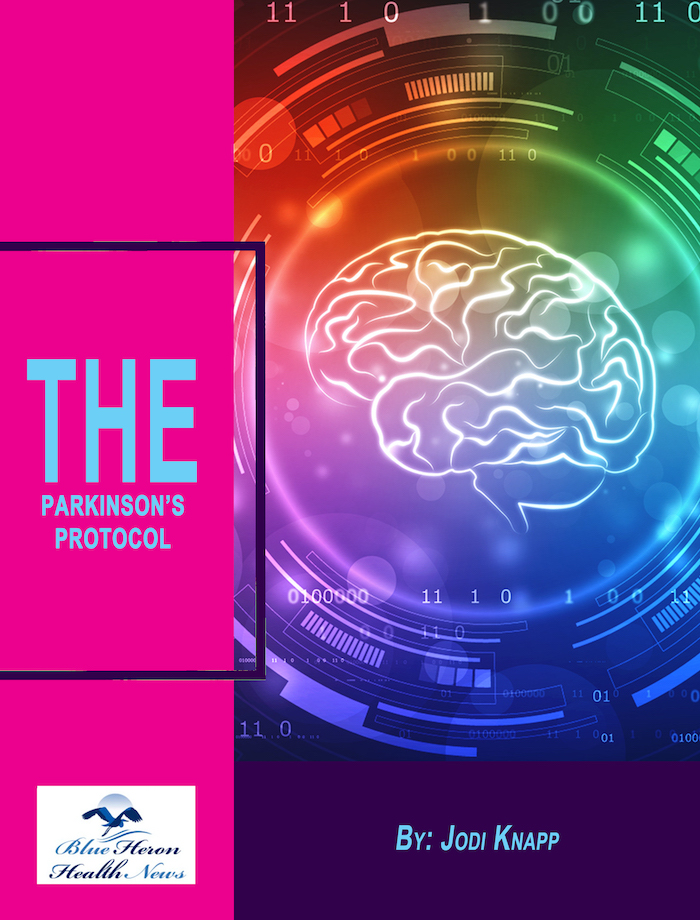
The Parkinson’s Protocol™ By Jodi Knapp Parkinson’s disease cannot be eliminated completely but its symptoms can be reduced, damages can be repaired and its progression can be delayed considerably by using various simple and natural things. In this eBook, a natural program to treat Parkinson’s disease is provided online. it includes 12 easy steps to repair your body and reduce the symptoms of this disease.
Quality of Life in Parkinson’s Disease
Quality of Life (QoL) in Parkinson’s disease (PD) is a crucial consideration, as the disease can significantly impact both physical and emotional well-being. Although Parkinson’s is primarily a movement disorder, its effects extend far beyond motor symptoms to include cognitive, emotional, and social challenges. Ensuring a good quality of life for individuals with Parkinson’s requires a holistic approach that addresses all aspects of the disease and focuses on improving physical function, emotional health, and social involvement.
1. Motor Symptoms and Their Impact on QoL
Motor symptoms in Parkinson’s disease, such as tremors, rigidity, bradykinesia (slowness of movement), and postural instability, can severely affect a person’s ability to perform daily tasks. These symptoms can lead to frustration, decreased independence, and a sense of loss of control.
- Tremors: Although tremors may not interfere with all daily activities, they can affect writing, eating, and drinking, leading to embarrassment and frustration.
- Bradykinesia: Slowness of movement can make routine tasks such as walking, dressing, or preparing meals more time-consuming, contributing to feelings of dependency.
- Postural Instability: Balance problems increase the risk of falls, leading to safety concerns and possibly limiting social participation.
2. Non-Motor Symptoms and Their Influence on QoL
Non-motor symptoms can be just as impactful on quality of life as motor symptoms. These can be more difficult to treat and may not be immediately recognized, leading to underdiagnosis and undertreatment.
- Sleep Disturbances: Many individuals with Parkinson’s experience sleep fragmentation, difficulty falling asleep, or excessive daytime sleepiness, which can contribute to fatigue and decreased quality of life.
- Depression and Anxiety: Parkinson’s disease is associated with a high prevalence of depression and anxiety, which can severely affect mental well-being. These emotional symptoms can reduce motivation and lead to withdrawal from social activities.
- Cognitive Decline: Some people with Parkinson’s experience mild cognitive impairment or Parkinson’s disease dementia. Cognitive changes, including memory difficulties, executive dysfunction, and slower processing speed, can interfere with work, relationships, and personal independence.
- Pain and Discomfort: Musculoskeletal pain, including rigidity and cramping, can contribute to chronic discomfort and reduce overall quality of life. Many people with Parkinson’s also report pain in non-motor regions of the body, such as the shoulders and lower back.
3. Emotional Well-Being and Psychological Health
Maintaining a positive emotional outlook is key to improving quality of life in Parkinson’s disease. The disease can cause feelings of frustration, anxiety about future progression, and social isolation. Addressing these emotional challenges is essential for a comprehensive care plan.
- Psychological Support: Therapy (including cognitive behavioral therapy and counseling) can be crucial in helping individuals navigate the psychological challenges of living with Parkinson’s. Support groups can offer emotional support by connecting people with others facing similar challenges.
- Depression and Anxiety Management: Recognizing and treating depression and anxiety is vital. Antidepressant and anti-anxiety medications, along with therapy, can help alleviate symptoms.
- Mindfulness and Relaxation: Practices like yoga, meditation, and tai chi can help manage stress, reduce anxiety, and improve emotional well-being.
4. Social and Family Dynamics
Social engagement plays a critical role in maintaining quality of life. Parkinson’s disease can create barriers to social interactions due to physical limitations, cognitive changes, or emotional challenges.
- Social Isolation: As symptoms progress, individuals may feel socially isolated due to difficulty participating in activities, embarrassment about symptoms (e.g., tremors or stiffness), or a lack of understanding from others. Staying connected with friends, family, and support networks is essential for combating feelings of loneliness and depression.
- Caregiver Support: Family members and caregivers play a vital role in the well-being of people with Parkinson’s. However, caregiving can be physically and emotionally demanding, leading to burnout. Providing caregivers with support, education, and respite care is essential for maintaining the well-being of both the person with Parkinson’s and their caregivers.
5. Physical Activity and Exercise
Exercise is one of the most beneficial interventions for improving quality of life in Parkinson’s disease. Regular physical activity can help manage motor symptoms, reduce stiffness, and improve mobility.
- Mobility and Balance: Exercises that improve strength, flexibility, and balance (such as tai chi, yoga, and Pilates) can help reduce the risk of falls and increase independence.
- Aerobic Exercise: Activities like walking, swimming, cycling, and dancing can enhance cardiovascular fitness, reduce fatigue, and improve overall mood. Studies have shown that regular exercise can slow disease progression and improve overall function.
- Physical Therapy: Tailored programs by a physical therapist can help individuals address specific mobility issues, such as difficulty walking or standing up, and can aid in developing strategies to compensate for movement limitations.
6. Diet and Nutrition
A healthy and balanced diet is important for individuals with Parkinson’s disease, not only for general health but also to manage symptoms and maintain energy levels.
- Protein and Medication: As levodopa is affected by protein in the diet, it’s important to time protein intake appropriately to ensure effective medication absorption.
- Antioxidant-Rich Foods: A diet rich in fruits, vegetables, and whole grains can support overall health and reduce oxidative stress in the brain. Foods high in antioxidants may help protect against further neurodegeneration.
- Hydration and Fiber: Adequate hydration and fiber intake are essential, as individuals with Parkinson’s often experience constipation, and staying hydrated helps to mitigate other symptoms such as fatigue.
7. Medication Management
The appropriate use of medication is central to managing symptoms and improving quality of life. However, side effects, such as dyskinesias (involuntary movements) or motor fluctuations, can sometimes complicate treatment. Adjusting medication regimens with the help of a doctor is an ongoing process.
- Levodopa: The cornerstone of treatment for motor symptoms, levodopa can help improve mobility and reduce tremors. Over time, the body may develop a tolerance, requiring dosage adjustments.
- Dopamine Agonists and MAO-B inhibitors may be used to supplement levodopa or delay its use. They can help reduce symptoms but may have different side effects.
8. Advance Care Planning
As Parkinson’s disease is progressive, it’s important for individuals to consider future care needs and end-of-life planning early on, even when symptoms are mild.
- Advance Directives: These legal documents can outline preferences for medical care, ensuring that decisions are made according to personal values, especially when cognitive decline becomes a concern.
- Palliative Care: As the disease progresses, individuals may benefit from palliative care, which focuses on symptom relief, quality of life, and emotional support. This care is not limited to end-of-life but can be integrated earlier in the disease process.
9. Technology and Assistive Devices
Technology and assistive devices can greatly enhance quality of life for people with Parkinson’s disease.
- Voice Assistants and Smart Homes: Technologies like voice-activated assistants or smart home devices (e.g., smart lights or thermostats) can increase independence and convenience, reducing the strain on caregivers.
- Mobility Aids: Devices like canes, walkers, and mobility scooters can improve physical mobility and reduce fall risk.
- Communication Aids: For those with speech difficulties, speech-generating devices or apps can help maintain effective communication.
10. Holistic Care and Support
A holistic approach to care that includes medical treatment, therapy, emotional support, and lifestyle adjustments is essential for maintaining quality of life.
- Interdisciplinary Team: Parkinson’s care often involves a team of specialists, including neurologists, physical therapists, speech therapists, occupational therapists, and mental health professionals, who work together to manage symptoms and promote well-being.
- Support Networks: Support groups for individuals with Parkinson’s and their families can provide a sense of community and emotional support. Peer connections can help reduce the feelings of isolation that may come with the disease.
Conclusion
Quality of life in Parkinson’s disease is influenced by many factors, including physical, emotional, and social well-being. While Parkinson’s disease presents significant challenges, a combination of medications, physical activity, emotional support, and assistive devices can help individuals manage their symptoms and maintain independence. Early intervention, personalized care plans, and a strong support network are key to improving the quality of life for those living with Parkinson’s disease.

The Parkinson’s Protocol™ By Jodi Knapp Parkinson’s disease cannot be eliminated completely but its symptoms can be reduced, damages can be repaired and its progression can be delayed considerably by using various simple and natural things. In this eBook, a natural program to treat Parkinson’s disease is provided online. it includes 12 easy steps to repair your body and reduce the symptoms of this disease.